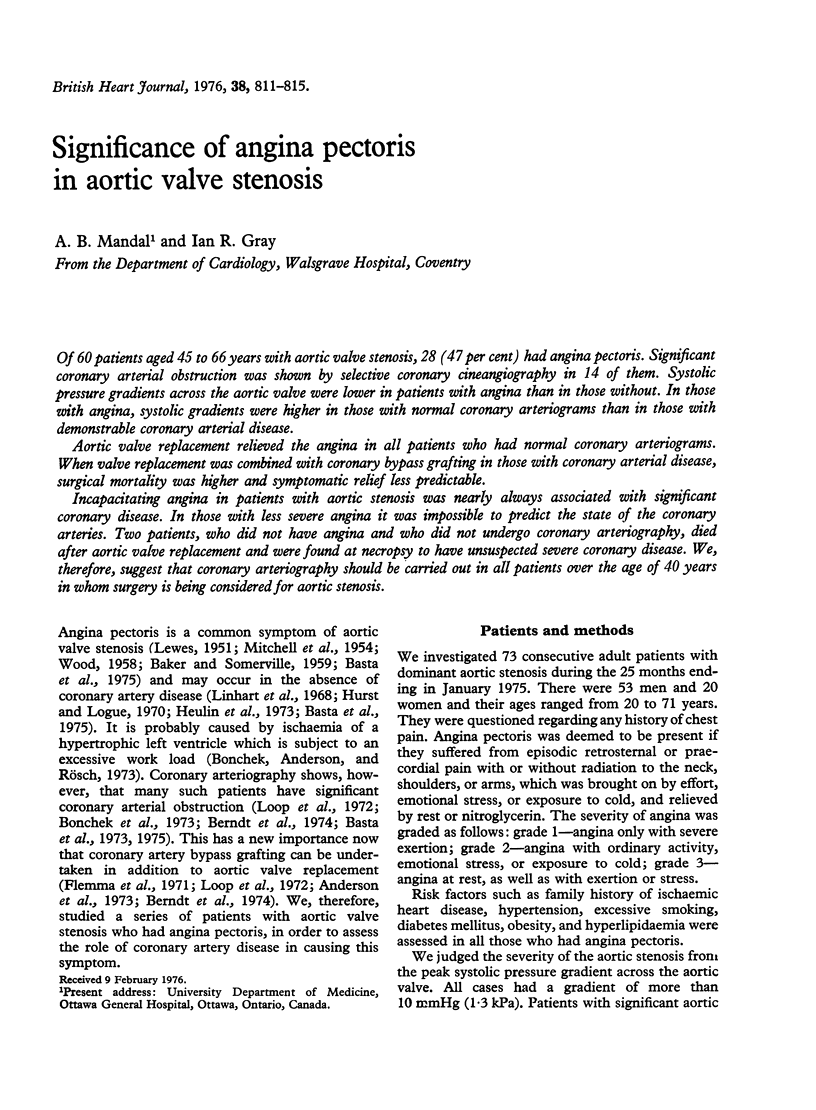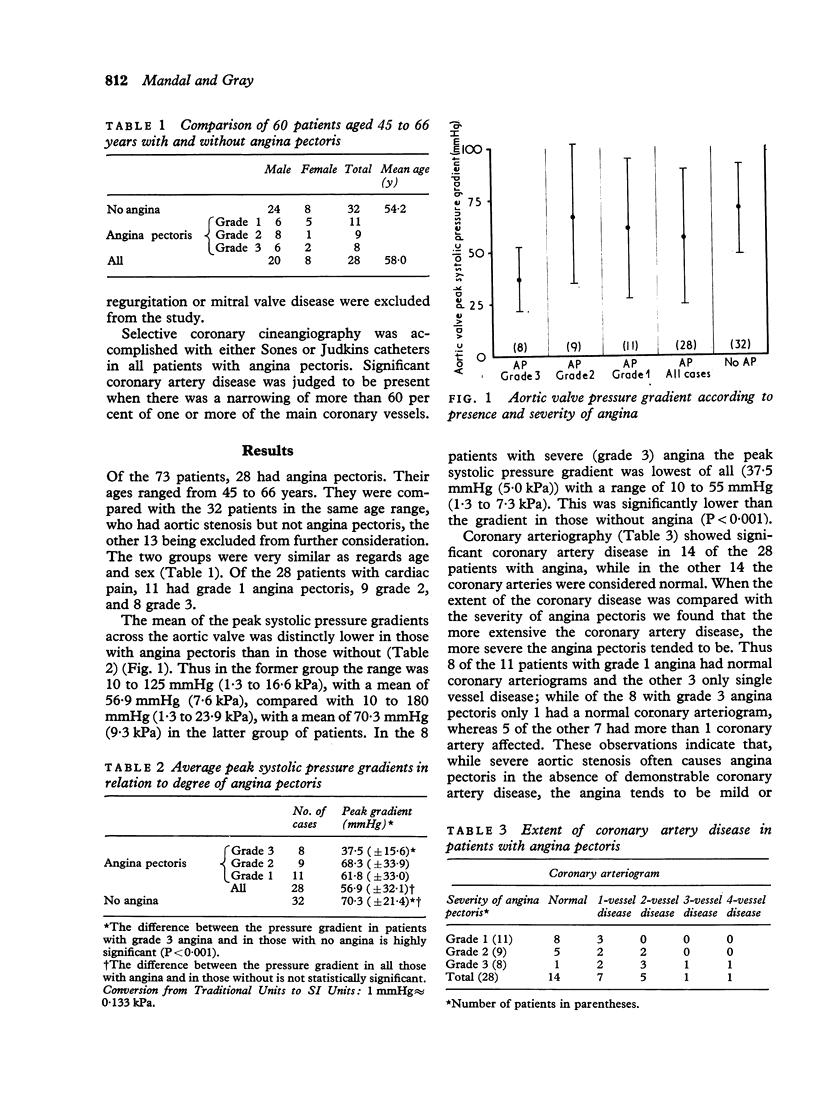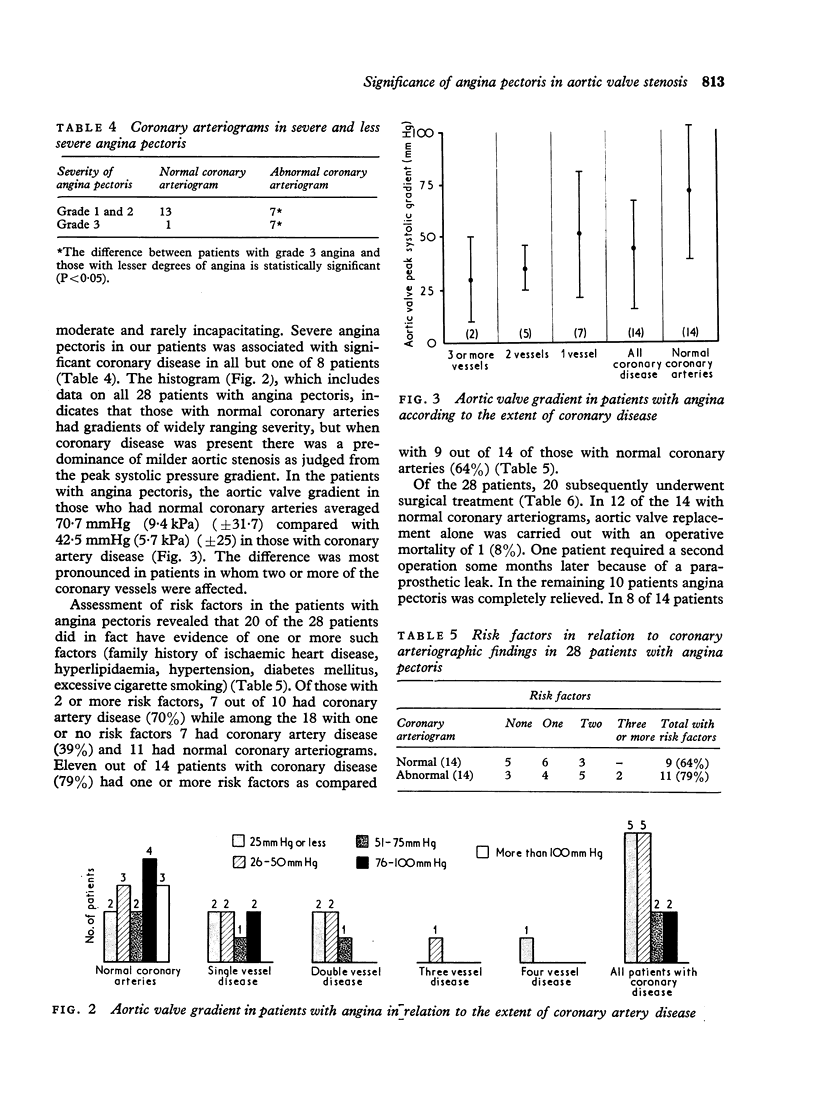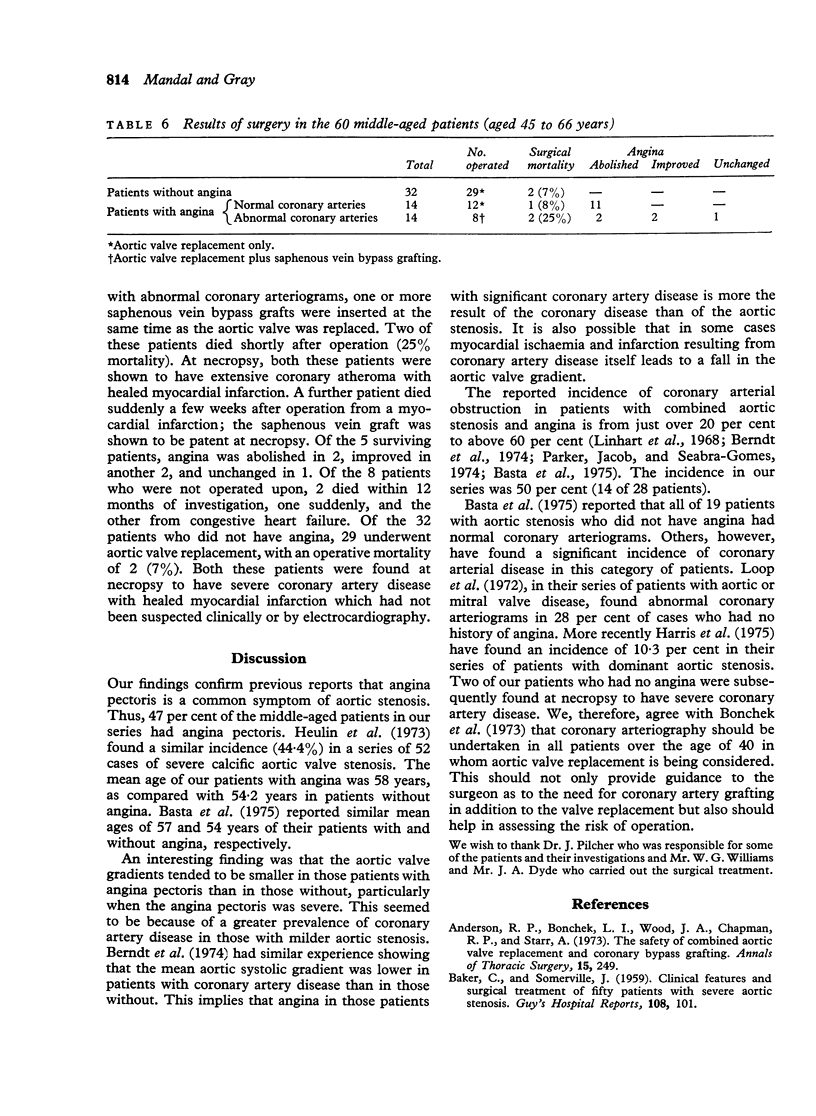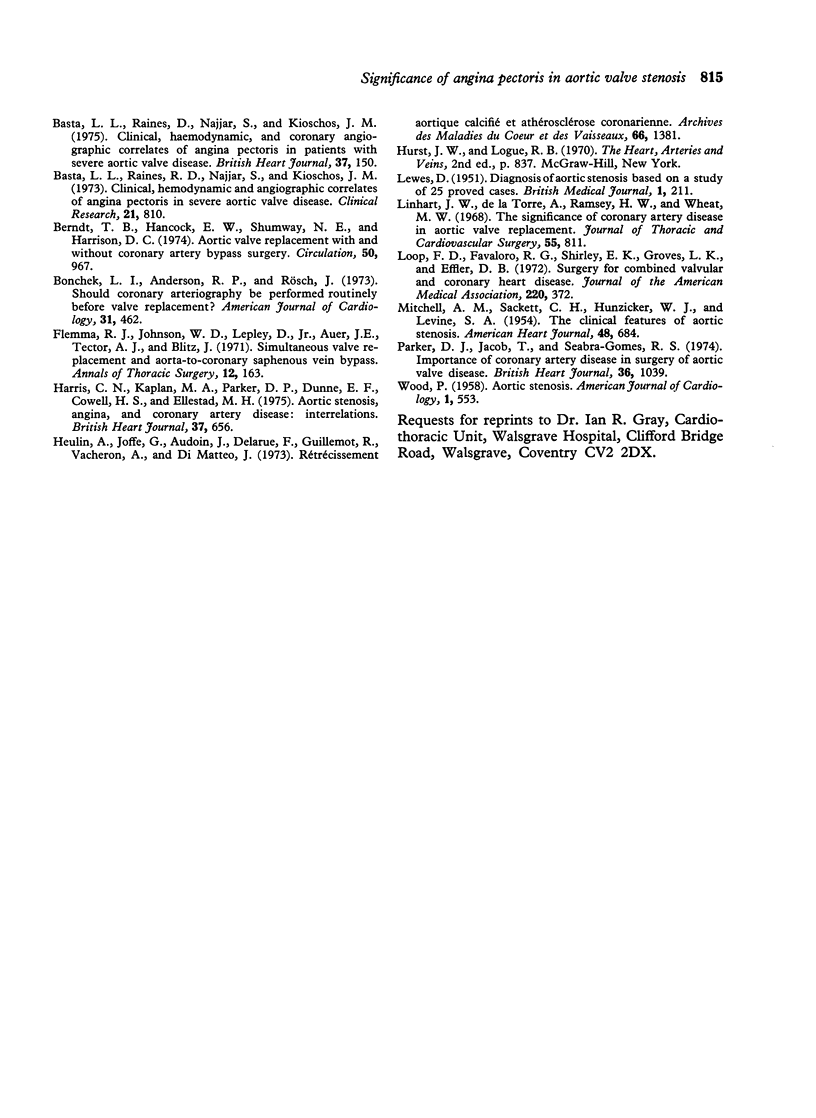Abstract
Of 60 patients aged 45 to 66 years with aortic valve stenosis, 28 (47 per cent) had angina pectoris. Significant coronary arterial obstruction was shown by selective coronary cineangiography in 14 of them. Systolic pressure gradients across the aortic valve were lower in patients with angina than in those without. In those with angina, systolic gradients were higher in those with normal coronary arteriograms than in those with demonstrable coronary arterial disease. Aortic valve replacement relieved the angina in all patients who had normal coronary arteriograms. When valve replacement was combined with coronary bypass grafting in those with coronary arterial disease, surgical mortality was higher and symptomatic relief less predictable. Incapacitating angina in patients with aortic stenosis was nearly always associated with significant coronary disease. In those with less severe angina it was impossible to predict the state of the coronary arteries. Two patients, who did not have angina and who did not undergo coronary arteriography, died after aortic valve replacement and were found at necropsy to have unsuspected severe coronary disease. We, therefore, suggest that coronary arteriography should be carried out in all patients over the age of 40 years in whom surgery is being considered for aortic stenosis.
Full text
PDF